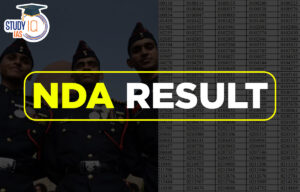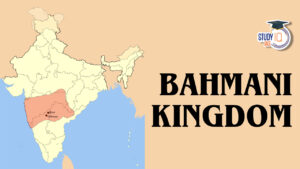Daily Quiz 9 July 2024
Quiz-summary
0 of 5 questions completed
Questions:
- 1
- 2
- 3
- 4
- 5
Information
- Click on – ‘Start Quiz’ button
- Solve Questions
- Click on ‘Next’ button
- Click on ‘Finish Quiz’ button
- Now click on ‘View Questions’ button – here you will see solutions and links.
- The test contains a total of 5 questions.
- Click on the most appropriate option to mark it as your answer.
- You will be awarded Two marks for each correct answer.
- You can change your answer by clicking on some other option.
- A Number list of all questions appears at the top side of the screen.
- You can access the questions in any order by clicking on the question number given on the number list.
- You can use rough sheets while taking the test.
- Do not use calculators, log tables, dictionaries, or any other printed/online reference material during the test.
- Do not click the button “Finish Quiz” before completing the test. A test once submitted cannot be resumed.
You have already completed the quiz before. Hence you can not start it again.
Quiz is loading...
You must sign in or sign up to start the quiz.
You have to finish following quiz, to start this quiz:
- 1
- 2
- 3
- 4
- 5
- Answered
- Review
-
Question 1 of 5
1. Question
1 pointsConsider the following components:
- International Container Transshipment Terminal
- Greenfield international airport
- Township
- Gas and solar power plant
How many of the above are the components of the Great Nicobar Project?
Correct
Answer: D
Explanation:
- Option (d) is correct:The proposed Rs 72,000 crore infrastructure project at Great Nicobar Island aims to leverage the island’s strategic location for economic and military advantages. Great Nicobar is the southernmost and largest of the Nicobar Islands, with a fragile ecosystem and significant biodiversity. Andaman and Nicobar Islands Integrated Development Corporation (ANIIDCO) is the implementing agency. Components of the project are: International Container Transshipment Terminal (ICTT), Greenfield international airport, Township and Gas and solar power plant. The project is vital for India’s national security amidst Chinese naval expansion. The project requires the diversion of about 130 sq km of forest land and the felling of around 10 lakh trees. Two wildlife sanctuaries, Galathea Bay and Megapode, were denotified to make way for the project. Galathea Bay, a critical habitat for the giant leatherback turtle, is listed in the ‘National Marine Turtle Action Plan’ as a protected area.
Incorrect
Answer: D
Explanation:
- Option (d) is correct:The proposed Rs 72,000 crore infrastructure project at Great Nicobar Island aims to leverage the island’s strategic location for economic and military advantages. Great Nicobar is the southernmost and largest of the Nicobar Islands, with a fragile ecosystem and significant biodiversity. Andaman and Nicobar Islands Integrated Development Corporation (ANIIDCO) is the implementing agency. Components of the project are: International Container Transshipment Terminal (ICTT), Greenfield international airport, Township and Gas and solar power plant. The project is vital for India’s national security amidst Chinese naval expansion. The project requires the diversion of about 130 sq km of forest land and the felling of around 10 lakh trees. Two wildlife sanctuaries, Galathea Bay and Megapode, were denotified to make way for the project. Galathea Bay, a critical habitat for the giant leatherback turtle, is listed in the ‘National Marine Turtle Action Plan’ as a protected area.
-
Question 2 of 5
2. Question
1 pointsConsider the following statements with respect to the Panchayats Extension to Scheduled Areas (PESA) Act:
- It requires for the consultation with the Gram Sabha before undertaking any development projects or activities in the Scheduled Areas.
- It requires that the consent of the Gram Sabha be obtained before any land is acquired or transferred.
- It contributes to the empowerment of tribal communities in the non-scheduled areas of the country, which are not covered by any other act.
Which of the statements given above is/are correct?
Correct
Answer: A
Explanation:
- Statements 1 and 2 are correct: The Panchayats Extension to Scheduled Areas (PESA) Act 1996 was enacted to provide for the extension of the provisions of Part IX of the Constitution relating to the Panchayats to the Scheduled Areas”.PESA extends local government councils to Scheduled Areas with predominantly tribal populations, requiring ST representation in local government councils. The Act grants special powers to Gram Sabhas in Scheduled Areas, particularly for managing natural resources. It requires for the consultation with the Gram Sabha before undertaking any development projects or activities in the Scheduled Areas. It requires that the consent of the Gram Sabha be obtained before any land is acquired or transferred, and this has helped to prevent the exploitation of tribal communities by outsiders.
- Statement 3 is incorrect: The Panchayats (Extension to the Scheduled Areas) Act, 1996 (PESA) is legislation designed for Scheduled Areas in India, identified by the President as regions predominantly populated by tribal communitiesTop of Form.Bottom of FormTribal communities in non-scheduled areas of the country are not covered by the Act and do not have access to its provisions. This is one of the limitation of the act.
Incorrect
Answer: A
Explanation:
- Statements 1 and 2 are correct: The Panchayats Extension to Scheduled Areas (PESA) Act 1996 was enacted to provide for the extension of the provisions of Part IX of the Constitution relating to the Panchayats to the Scheduled Areas”.PESA extends local government councils to Scheduled Areas with predominantly tribal populations, requiring ST representation in local government councils. The Act grants special powers to Gram Sabhas in Scheduled Areas, particularly for managing natural resources. It requires for the consultation with the Gram Sabha before undertaking any development projects or activities in the Scheduled Areas. It requires that the consent of the Gram Sabha be obtained before any land is acquired or transferred, and this has helped to prevent the exploitation of tribal communities by outsiders.
- Statement 3 is incorrect: The Panchayats (Extension to the Scheduled Areas) Act, 1996 (PESA) is legislation designed for Scheduled Areas in India, identified by the President as regions predominantly populated by tribal communitiesTop of Form.Bottom of FormTribal communities in non-scheduled areas of the country are not covered by the Act and do not have access to its provisions. This is one of the limitation of the act.
-
Question 3 of 5
3. Question
1 pointsConsider the following statements:
- The Enemy Agents Ordinance is a law specific to the Union Territory of Jammu and Kashmir (J&K) in India.
- Trials are conducted by the court martial and cannot be appealed to a court lower than the Supreme Court.
- The ordinance prohibits disclosure or publication of case details.
How many of the statements given above are correct?
Correct
Answer: B
Explanation:
- Statement 1 is correct: The Enemy Agents Ordinance is a law specific to the Union Territory of Jammu and Kashmir (J&K) in India. It deals with people who aid enemies of the state. The J&K Enemy Agents Ordinance was first issued in 1917 by the Dogra Maharaja of J&K. It is referred to as an ‘ordinance’ because laws during Dogra rule were called ordinances. Post-Partition in 1947, it was incorporated into the legal framework of the erstwhile state and later amended.
- Statement 2 is incorrect: Trials are conducted by a special judge appointed by the government in consultation with the High Court. The accused cannot engage a lawyer unless permitted by the court. The ordinance specifies that an accused can be defended by a pleader if the Special Judge or reviewing Judge grants permission. There is no provision for appeal against the verdict; a High Court judge chosen by the government reviews the decision, which is final.
- Statement 3 is correct: The ordinance prohibits disclosure or publication of case details, with penalties of up to two years imprisonment, fine, or both for unauthorised disclosures. With the repeal of Article 370 in 2019, J&K’s legal framework underwent significant changes. Security laws like the Enemy Agents Ordinance and Public Safety Act remained; the Ranbir Penal Code was replaced by the Indian Penal Code.
Incorrect
Answer: B
Explanation:
- Statement 1 is correct: The Enemy Agents Ordinance is a law specific to the Union Territory of Jammu and Kashmir (J&K) in India. It deals with people who aid enemies of the state. The J&K Enemy Agents Ordinance was first issued in 1917 by the Dogra Maharaja of J&K. It is referred to as an ‘ordinance’ because laws during Dogra rule were called ordinances. Post-Partition in 1947, it was incorporated into the legal framework of the erstwhile state and later amended.
- Statement 2 is incorrect: Trials are conducted by a special judge appointed by the government in consultation with the High Court. The accused cannot engage a lawyer unless permitted by the court. The ordinance specifies that an accused can be defended by a pleader if the Special Judge or reviewing Judge grants permission. There is no provision for appeal against the verdict; a High Court judge chosen by the government reviews the decision, which is final.
- Statement 3 is correct: The ordinance prohibits disclosure or publication of case details, with penalties of up to two years imprisonment, fine, or both for unauthorised disclosures. With the repeal of Article 370 in 2019, J&K’s legal framework underwent significant changes. Security laws like the Enemy Agents Ordinance and Public Safety Act remained; the Ranbir Penal Code was replaced by the Indian Penal Code.
-
Question 4 of 5
4. Question
1 pointsConsider the following rivers:
- Rangeet
- Zemu chhu
- Rani Khola
- Subansiri
- Subarnrekha
How many of the above rivers are the tributaries of the Teesta river
Correct
Answer: B
Explanation:
- Option (b) is correct: The Teesta River is a tributary of the Brahmaputra River (known as Jamuna in Bangladesh) and flows through India and Bangladesh (only 17%). It originates in the Himalayas near the Tso Lhamo Lake, in Sikkim. Khangse Glacier and Chho Lhamo are considered sources of the Teesta River . Left-bank Tributaries are : Lachung Chhu, Chakung Chhu, Dik Chhu, Rani Khola and Rangpo Chhu. Right-bank Tributaries are : Zemu Chhu, Rangyong Chhu and Rangit River. Subarnarekha is one of the longest east flowing inter-state rivers. It originates near Nagri village in Ranchi district of Jharkhand. The Subansiri(Chayul Chu in Tibet) is a trans-Himalayan river and a tributary of the Brahmaputra River that flows through Tibet’s Lhuntse County. The Teesta Water Dispute is a long-standing issue between India and Bangladesh concerning the sharing of the waters of the Teesta River, which originates in the Indian state of Sikkim and flows through the northern part of West Bengal before entering Bangladesh. As of now, no final agreement has been reached, and negotiations continue. The issue remains a sensitive political matter, affecting bilateral relations between India and Bangladesh.
Incorrect
Answer: B
Explanation:
- Option (b) is correct: The Teesta River is a tributary of the Brahmaputra River (known as Jamuna in Bangladesh) and flows through India and Bangladesh (only 17%). It originates in the Himalayas near the Tso Lhamo Lake, in Sikkim. Khangse Glacier and Chho Lhamo are considered sources of the Teesta River . Left-bank Tributaries are : Lachung Chhu, Chakung Chhu, Dik Chhu, Rani Khola and Rangpo Chhu. Right-bank Tributaries are : Zemu Chhu, Rangyong Chhu and Rangit River. Subarnarekha is one of the longest east flowing inter-state rivers. It originates near Nagri village in Ranchi district of Jharkhand. The Subansiri(Chayul Chu in Tibet) is a trans-Himalayan river and a tributary of the Brahmaputra River that flows through Tibet’s Lhuntse County. The Teesta Water Dispute is a long-standing issue between India and Bangladesh concerning the sharing of the waters of the Teesta River, which originates in the Indian state of Sikkim and flows through the northern part of West Bengal before entering Bangladesh. As of now, no final agreement has been reached, and negotiations continue. The issue remains a sensitive political matter, affecting bilateral relations between India and Bangladesh.
-
Question 5 of 5
5. Question
1 pointsWhich of the following statement best describes the main purpose of the E-Sakshya app recently seen in news:
Correct
Answer: A
Explanation:
- Statement (a) is correct: A few days before the implementation of the three penal laws, the Union Ministry of Home Affairs (MHA) is testing eSakshya (electronic evidence) application.It will help the police record crime scenes, searches and seizures in a criminal case.It aims to improve investigation standards by enabling police officials to record crime scenes and forensic examinations using audiovisual technology. This initiative seeks to enhance the quality and reliability of evidence collection, potentially leading to more effective law enforcement and improved conviction rates. According to the latest National Crime Records Bureau (NCRB) report, 5.824 million crimes were reported in India in 2022 under the Indian Penal Code and Special Laws.
Incorrect
Answer: A
Explanation:
- Statement (a) is correct: A few days before the implementation of the three penal laws, the Union Ministry of Home Affairs (MHA) is testing eSakshya (electronic evidence) application.It will help the police record crime scenes, searches and seizures in a criminal case.It aims to improve investigation standards by enabling police officials to record crime scenes and forensic examinations using audiovisual technology. This initiative seeks to enhance the quality and reliability of evidence collection, potentially leading to more effective law enforcement and improved conviction rates. According to the latest National Crime Records Bureau (NCRB) report, 5.824 million crimes were reported in India in 2022 under the Indian Penal Code and Special Laws.
Results
0 of 5 questions answered correctly
Your time:
Time has elapsed
You have reached 0 of 0 points, (0)
| Average score |
|
| Your score |
|
Categories
- Not categorized 0%
| Pos. | Name | Entered on | Points | Result |
|---|---|---|---|---|
| Table is loading | ||||
| No data available | ||||
Sharing is caring!

 UPSC NDA 1 Result 2025 Out @ upsc.gov.in...
UPSC NDA 1 Result 2025 Out @ upsc.gov.in...
 Minors Bank Account above 10 Years: Chan...
Minors Bank Account above 10 Years: Chan...
 Bahmani Kingdom (1347-1527 AD), History,...
Bahmani Kingdom (1347-1527 AD), History,...





















